Intermittent Self Catheterisation for Men
Bladder problems are much more common than you would expect. There are lots of men, women and children who experience bladder issues, and use Intermittent Self Catheterisation (ISC) as a way to help them lead a normal life.

Reasons for Self-Catheterisation
There may be a number of reasons why you are unable to empty your bladder, and these should have been explained to you by your healthcare professional.
What is Intermittent Self Catheterisation?
Intermittent Self Catheterisation (ISC) is the insertion and removal of a catheter at regular intervals during the day to empty the bladder.
This is done by inserting the catheter through the urethra (this is the tube that leads from the bladder to the outside opening).
Your specialist nurse will be able to teach you the self-catheterisation technique, advise you on how often it should be done and will also help you make a choice on which type of catheter is best suited to your needs. The procedure is simple to carry out and after a little practice, can be done in just a few minutes.
Advantages of ISC
The key advantage of performing ISC is convenience, allowing you to manage your bladder at times and places that suit you, giving you more control of your life.
Emptying your bladder completely prevents residues or urine remaining which will reduce the amount of times you need to visit the toilet. This not only protects the bladder but also reduces the risk of leakage, urinary tract infections and other complications.
The Urinary System
Your urinary system is made up of the kidneys, ureters, bladder, urethra and bladder neck sphincter.
Kidneys
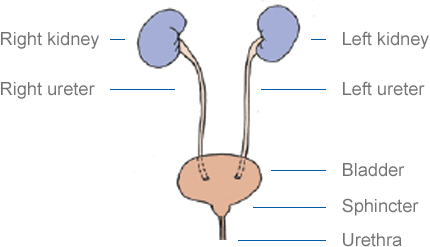
The kidneys extract soluble waste products from the blood and this becomes your urine. They perform this process continuously, 24 hours a day. The urine passes to the bladder through a small tube called a ureter.
Ureters
The ureters are narrow, hollow tubes that lead from the kidneys to the bladder. There is one ureter connecting each kidney to the bladder. After passing along the ureter, the urine arrives at the bladder where it is stored.
Bladder
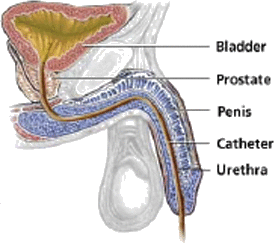
The bladder is a hollow organ with a muscular wall and has two primary functions – the storage and emptying of urine. The bladder is filling continuously.
As it enlarges, the urge to empty increases. This is when you will feel the need to go to the toilet; where muscles will allow the urine to pass out of the bladder into the urethra, and away from the body.
Urethra
The function of the urethra is to drain urine from the bladder.
Male Catheters
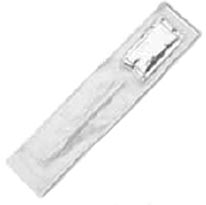
There are a number of different types of catheters for men available. All perform the same basic function of draining the bladder, but as we are all individuals, you may find that one catheter suits you better than another. Your specialist nurse will advise you on the choice of male catheters available and the one that best suits your needs.
- Hydrophilic – these catheters have a special coating and either come ready to use or are activated after being immersed in water for around 30
seconds. They are often packaged with a small sachet of sterile water that is used for this purpose. - Hydrogel – these catheters have a gel reservoir which lubricates the catheter as it passes through and are ready for immediate use.
Many male catheters are also available with a urine collection bag attached. This may be useful for you if you do not have a great deal of dexterity and find holding the catheter difficult.
These catheters are for single use only unless otherwise directed by your healthcare professional.
Basic Hygiene
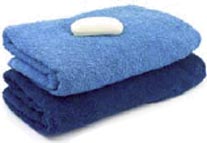
- With ISC it is essential that a clean procedure is used. The main benefit of using ISC is that it reduces the likelihood of infection compared to indwelling catheters but this is only the case if good hygiene habits are maintained.
- Wash your hands (soap and water is fine, but an antibacterial hand gel can be used instead; this may be especially useful if you are away from
home, using a public toilet) - Wash your penis thoroughly. Mild soap and water is all that is required. Dry with a clean towel.
- Do not touch anything else apart from your catheter.
Performing ISC
The information provided here is intended as follow up advice to support that given to you by your specialist nurse. Always follow the advice you have been given by the nurse.
Male Catheter Insertion and Removal Procedure
- Ensure that you have followed the cleaning and washing routine.
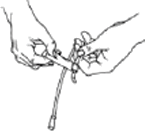
- Lubricate the catheter following the manufacturer’s instructions.
- Pull back the foreskin (if you have one) and hold your penis up towards your tummy with one hand.
- Insert the catheter with the other hand, being careful not to touch the end that is to enter the bladder.
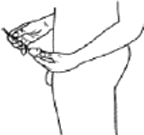
- If it is more difficult to insert as it gets nearer the bladder, cough slightly and continue to insert gently. If there is continued resistance withdraw and try again a little later.
- When the catheter reaches the bladder, ensure that the open end of the catheter is pointed towards the toilet, a bowl or jug as it will begin to drain urine immediately.
- Slowly withdraw the catheter and pull the foreskin forward.
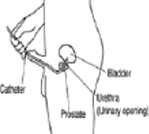
- Dispose of the catheter.
- Look at the colour of your urine and note any change of colour or smell. This will indicate any problems with infection or if you are not drinking enough fluids.
- Wash your hands.
Important
YOU MUST REMOVE THE CATHETER AFTER DRAINING YOUR BLADDER, IT MUST NOT BE LEFT IN PLACE
Travel
Using ISC should not affect your ability to lead a normal life and that includes travel. You can fly and visit destinations at home and abroad just like anyone else. Below are some handy tips for you to consider when travelling.
Depending on the length of your journey, take enough catheters with you in your hand baggage. You should take some antibacterial gel or wipes when travelling to allow you to clean your hands as not all toilets on your journey will have soap and running water.
Do not tightly coil your catheters as this can cause them to block. Some catheters can be loosely coiled for a short period, but this should be as short as possible – follow your manufacturer’s recommendations.

Keep your catheters in a cool, dry place as excessive heat over a prolonged period may cause the lubricating gel to dry out.
Before travelling, you will need to check with your airline their policy for carrying these items in your luggage, as Customs and Security officials may ask you questions about the catheters. Fittleworth can also send you a Travel card that explains why you have the appliances with you.
Fittleworth can offer business or leisure travellers other forms of support too. Fittleworth is the exclusive UK member of the World Assist Alliance; a network dedicated to helping stoma and continence customers with emergency goods when abroad on holiday or business. The same discreet service you expect from Fittleworth and usually within 48 hours.

Who is eligible?
Fittleworth customers who have had 3 or more prescriptions dispensed in the previous 12 months. Simply call your normal Fittleworth contact number with your details and requirements and we will do the rest. There is no need to get a prescription or claim on insurance and World Assist Alliance is a FREE of charge service.
Questions and Answers
You are bound to have questions with regard to ISC, and below we have detailed a few of the most common questions together with answers to help you. If you have any concerns with regard to ISC, please contact your healthcare professional.
